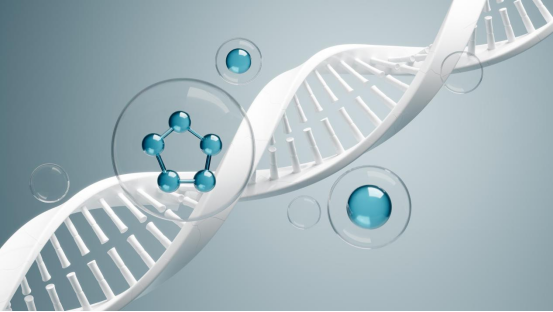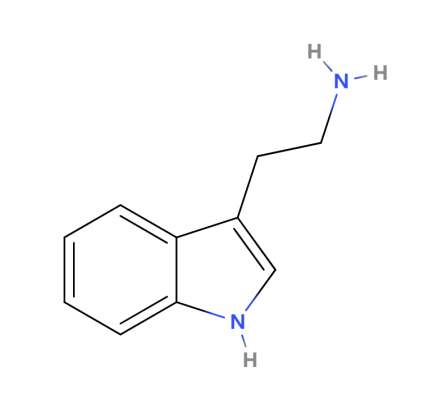Explore the Potential of Tryptamine in Research Chemicals
Tryptamine, with CAS number 61-54-1 and chemical formula C10H12N2, has quickly emerged as an attractive research chemical with great promise. It has been found in various natural plants, fungi and animals. This article delves deep into Tryptamine and its applications, while providing insight into its significance within research chemicals.

1. What is Tryptamine?
Tryptamine, commonly referred to as 2-(1H-indol-3-yl)ethanamine, is an organic compound belonging to the family of monoamine alkaloids and classified as an organic monoamine alkaloid. Tryptamine shares structural similarities with serotonin in its actions on biological systems in humans and plays an essential role in various processes within them. Primarily made up from amino acid tryptophan, its production has been found in various natural sources such as plants, fungi, and animals.
Chemical Abstracts Service (CAS) Number 61-54-1 Is Assigned to Tryptamine
A unique identification number was designated for Tryptamine by Chemical Abstracts Service (CAS), simplifying reference in scientific literature as well as communication among researchers and professionals working within its field. This alphanumeric code ensures accurate referencing and communication of Tryptamine between researchers.
Chemical Formula of Tryptamine
Tryptamine can be represented by its chemical formula: C10H12N2. This gives researchers insight into its molecular structure; consisting of 10 carbon atoms, 12 hydrogen atoms and 2 nitrogen atoms it shows exactly which atoms make up each Tryptamine molecule - providing key data about its behavior and potential applications across many fields.

2. Tryptamine and Research Chemicals
Tryptamine has attracted considerable research interest due to its varied potential applications. Its structural similarity to serotonin makes Tryptamine an intriguing compound to explore across fields such as neuroscience, pharmacology and medicinal chemistry - including its effect on brain function, behavior and its therapeutic advantages. Researchers are actively investigating Tryptamine's effects on these areas as well as potential therapeutic advantages.
Within the realm of research chemicals, Tryptamine stands out as an invaluable asset. Due to its unique properties and molecular structure, Tryptamine makes for an excellent tool in understanding neurotransmission, drug interactions and developing potential new therapeutic agents - thus providing researchers with new insight into expanding knowledge.
3. Applications of Tryptamine:
Tryptamine has long been linked with its effects on mood, cognition, and behavior. Researchers are investigating its potential as a neurotransmitter modulator in order to better understand its role in mental health disorders such as depression, anxiety and schizophrenia - further investigations may yield therapeutic interventions or deepen our knowledge of human brain.
4 Medicinal Chemistry and Drug Development
Tryptamine's unique chemical structure makes it an attractive choice for medicinal chemistry research and drug development, with scientists exploring new compounds based on Tryptamine backbone that may offer potential treatments for various conditions. Tryptamine derivatives have shown promise during preclinical studies as potential future therapeutic agents.
5. Safety Considerations and Regulations:
Tryptamine holds great potential in research chemicals, but its use must be handled carefully to be utilized responsibly and safely in scientific investigations. Researchers and professionals must adhere to stringent safety protocols and ethics considerations when handling it for ethical use in scientific investigations. Incorporating safety measures established by established guidelines will ensure proper use of this compound.
As is true with any research chemical, Tryptamine falls under an array of local, regional, and international laws and regulations that must be considered when conducting studies with this agent. Therefore, researchers should stay aware of all relevant legislation affecting Tryptamine within their individual jurisdictions to ensure ethical conduct during studies using Tryptamine.
6. Prospects and Conclusion:
Exploring Tryptamine's Unlocked Potential
Exploration of Tryptamine and its applications as research chemicals is an ongoing activity. As researchers uncover more secrets of Tryptamine, new avenues of exploration and innovative applications may arise - making Tryptamine an enticing topic of further investigations. Its unique properties also make this compound an intriguing subject of further investigations.
Conclusion: Utilizing Tryptamine in Research Chemicals
Tryptamine stands as an unparalleled research chemical with its CAS number 61-54-1 and chemical formula C10H12N2, making it one of the most coveted research chemicals on the market. Due to its similarity to serotonin and potential applications across disciplines, Tryptamine research continues to garner widespread acclaim from scientists across various fields. Tryptamine holds great promise as an insight into brain function, behavior and development of novel therapeutic agents; with responsible usage and compliance with safety regulations it holds promise in shaping future scientific research and making invaluable contributions towards advancement across various fields of study.
Hot News
-
Valerophenone: Synthesis, Uses and Properties
2023-07-18
-
Explore the Potential of Tryptamine in Research Chemicals
2023-07-18
-
What Is DL-Menthol?
2023-07-18


